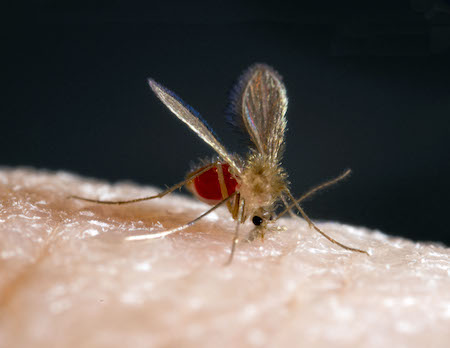Summary
Definition
History and exam
Key diagnostic factors
- previous stay in endemic area
- immunosuppression
- prolonged fever
- weight loss
- ulcerative skin lesions
- multiple nonulcerative skin nodules
- destructive mucosal inflammation
- splenomegaly
- skin darkening
Other diagnostic factors
- fatigue
- cough
- headache
- wasting
- enlarged lymph nodes
- hepatomegaly
- previous antileishmanial treatment
- epistaxis
- abdominal pain
Risk factors
- high exposure to sand fly bites
- poverty
- proximity to a patient with a history of infection
- ownership of domestic animals
- immunosuppression
Diagnostic investigations
1st investigations to order
- CBC
- liver function tests and BUN
- serum human chorionic gonadotropin (hCG)
Investigations to consider
- microscopic exam of relevant specimen
- blood (buffy coat) or tissue culture
- polymerase chain reaction (PCR)
- serology
- serum HIV testing
Treatment algorithm
cutaneous leishmaniasis (CL)
mucosal leishmaniasis (ML)
visceral leishmaniasis (VL)
post-kala-azar dermal leishmaniasis (PKDL)
relapse
Contributors
Authors
Naomi E. Aronson, MD
Professor of Medicine
Director, Infectious Diseases Division
Uniformed Services University of the Health Sciences
Bethesda
MD
Disclosures
NEA receives federal grants to study leishmaniasis (received by NEA's institution USU), has given lectures on the topic of leishmaniasis at national and international meetings, and has a patent on biomarkers for leishmaniasis. NEA's institution USU has received royalties for her writing and editorial work for UpToDate. NEA is an unpaid member for the NIH/CDC/HIVMA guidelines group (the guideline is cited in this topic), and has chaired the IDSA/ASTMH guidelines (also cited in this topic). NEA is an author of a number of references cited in this topic. The views expressed in this topic are those of the authors and do not reflect the official policy of the Department of Army/Navy/Air Force, the Department of Defense, or the US Government.
Nathanial K. Copeland, MD, MTM&H
Assistant Professor of Medicine
Uniformed Services University of the Health Sciences
Bethesda
MD
Disclosures
NKC is an author of a number of references cited in this topic. The views expressed in this topic are those of the authors and do not reflect the official policy of the Department of Army/Navy/Air Force, the Department of Defense, or the US Government.
Acknowledgements
Professor Naomi E. Aronson and Dr Nathanial K. Copeland would like to gratefully acknowledge Professor Richard Reithinger and Professor François Chappuis, previous contributors to this topic.
Disclosures
RR and FC are authors of a number of references cited in this topic.
Peer reviewers
Roberto Arenas, MD
Chief of the Mycology Section
Dr. Manuel Gea Gonzalez General Hospital
Mexico
Disclosures
RA is the author of an article cited in this topic.
Peer reviewer acknowledgements
BMJ Best Practice topics are updated on a rolling basis in line with developments in evidence and guidance. The peer reviewers listed here have reviewed the content at least once during the history of the topic.
Disclosures
Peer reviewer affiliations and disclosures pertain to the time of the review.
References
Key articles
Aronson N, Herwaldt BL, Libman M, et al. Diagnosis and treatment of leishmaniasis: clinical practice guidelines by the Infectious Diseases Society of America (IDSA) and the American Society of Tropical Medicine and Hygiene (ASTMH). Clin Infect Dis. 2016 Dec 15;63(12):1539-57.Full text Abstract
National Institutes of Health, Centers for Disease Control and Prevention, HIV Medicine Association, and Infectious Diseases Society of America. Panel on Guidelines for the Prevention and Treatment of Opportunistic Infections in Adults and Adolescents with HIV. Guidelines for the prevention and treatment of opportunistic infections in adults and adolescents with HIV: Leishmaniasis. 2024 [internet publication].Full text
Aronson NE, Joya CA. Cutaneous leishmaniasis: updates in diagnosis and management. Infect Dis Clin North Am. 2019 Mar;33(1):101-17. Abstract
World Health Organization. Manual on case management and surveillance of the leishmaniases in the WHO European Region. July 2017 [internet publication].Full text
Chakravarty J, Sundar S. Current and emerging medications for the treatment of leishmaniasis. Expert Opin Pharmacother. 2019 Jul;20(10):1251-65. Abstract
Pan American Health Organization. Guideline for the treatment of Leishmaniasis in the Americas. Second edition. Sep 2022 [internet publication].Full text
Reference articles
A full list of sources referenced in this topic is available to users with access to all of BMJ Best Practice.

Differentials
- Hyperreactive malarial splenomegaly (HMS)
- Malaria infection
- Schistosomiasis
More DifferentialsGuidelines
- CDC Yellow Book: health information for international travel - leishmaniasis
- CDC Yellow Book: health information for international travel - leishmaniasis
More GuidelinesLog in or subscribe to access all of BMJ Best Practice
Use of this content is subject to our disclaimer